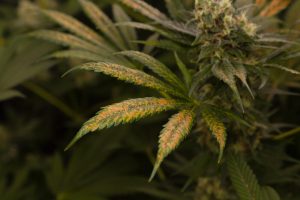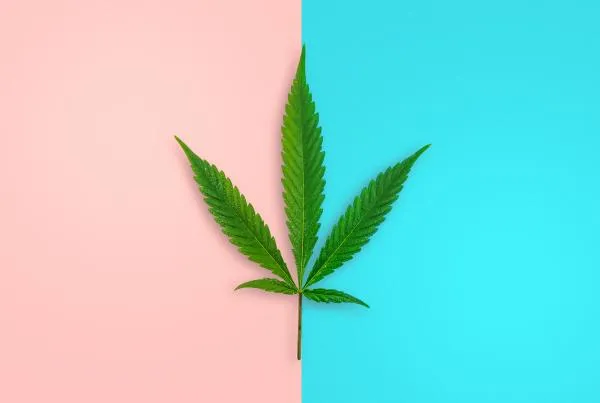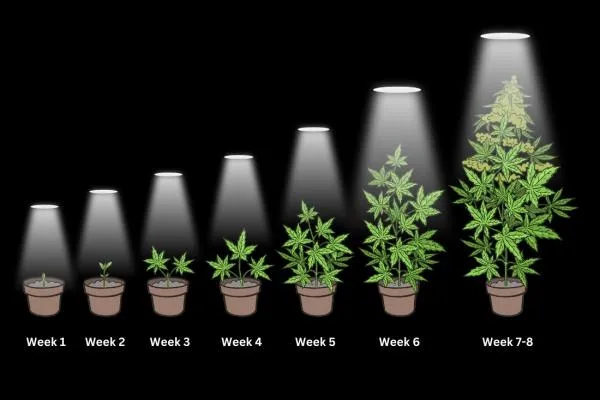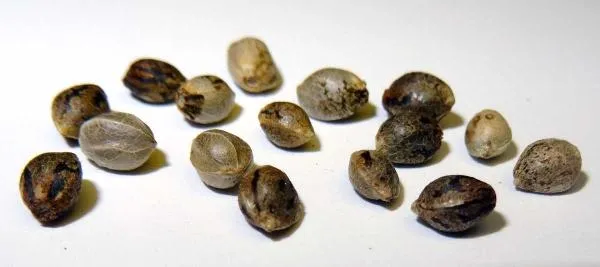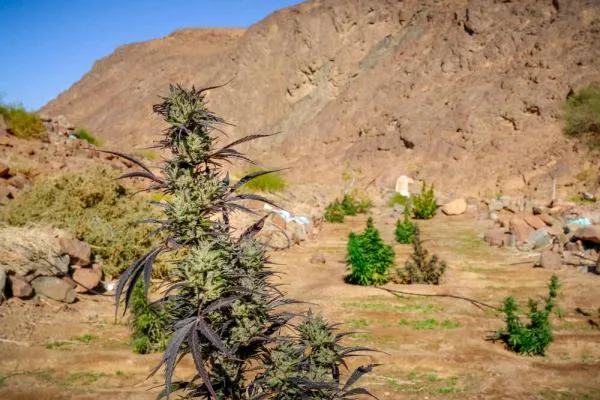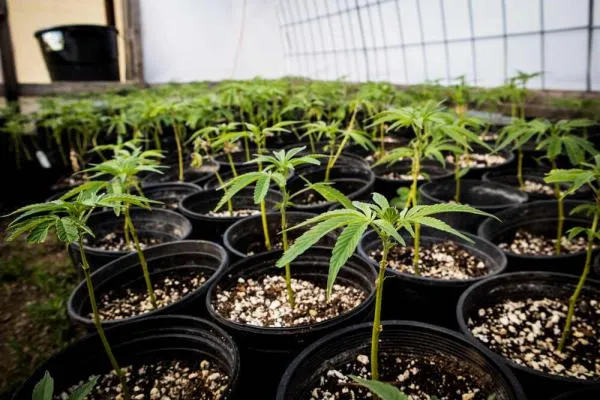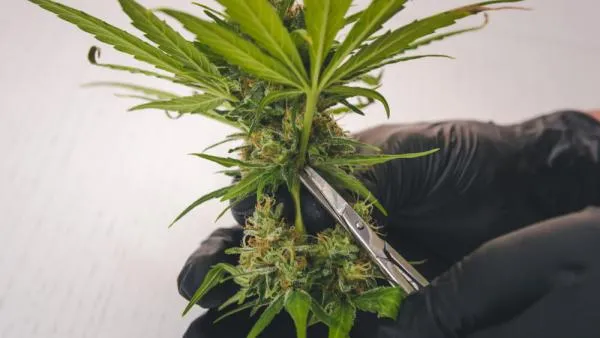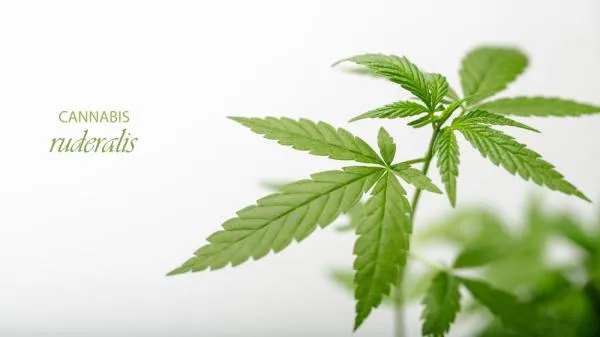Brown spots on cannabis leaves are almost always a symptom of underlying problems like nutrient imbalance, pests or environmental stress. Knowing how to identify the root cause and then what to do about it is key to a healthy grow. This article looks at many of the most common causes—calcium, potassium, and nitrogen deficiencies. It also covers pH imbalances, heat/light burn, Leaf Septoria, root issues, and pests—and provides practical solutions to keep your plants healthy and thriving.
Possible causes for brown spots on cannabis leaves
Brown spots on cannabis leaves can worry even the most experienced grower. These spots indicate underlying issues that need addressing to ensure your plant’s health. Common causes include nutrient deficiencies, pests, disease, and environmental stress. Identifying the specific cause is key to finding the right solution.
Calcium deficiency
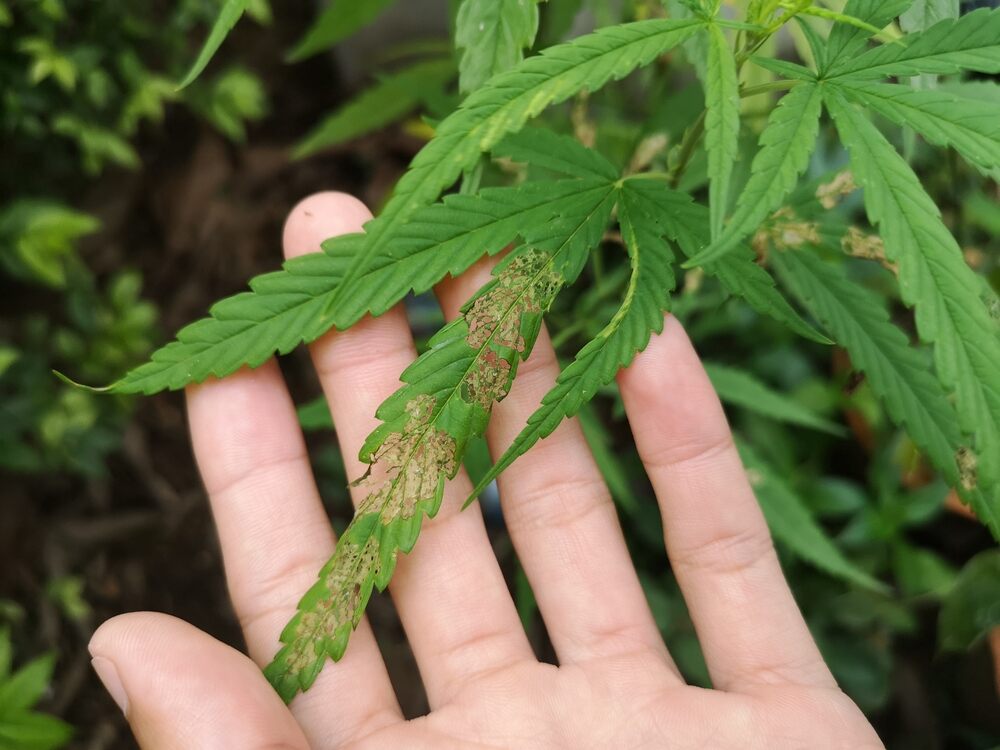
Calcium deficiency is probably the most common cause of brown spots on cannabis leaves. Calcium is essential for cell wall structure and growth. When cannabis plants lack calcium, new growth shows brown, crispy spots, usually accompanied by discolored and curled leaf edges. This deficiency usually stems from the incorrect soil pH blocking the uptake of the available calcium in the growing medium or inadequate nutrient supply.
How to fix Calcium deficiency:
The first step to sort out a calcium deficiency is to adjust your soil's pH to 6.2-7.0 (6-6.5 for hydro setups), as this range optimizes calcium absorption in cannabis. Then use a calcium-magnesium supplement or add dolomite lime to your soil to ensure that there is plenty available for your plant to use. Once you have the correct pH range in your grow medium, regularly monitor your plants to maintain balanced nutrient levels and prevent future problems.
Potassium deficiency
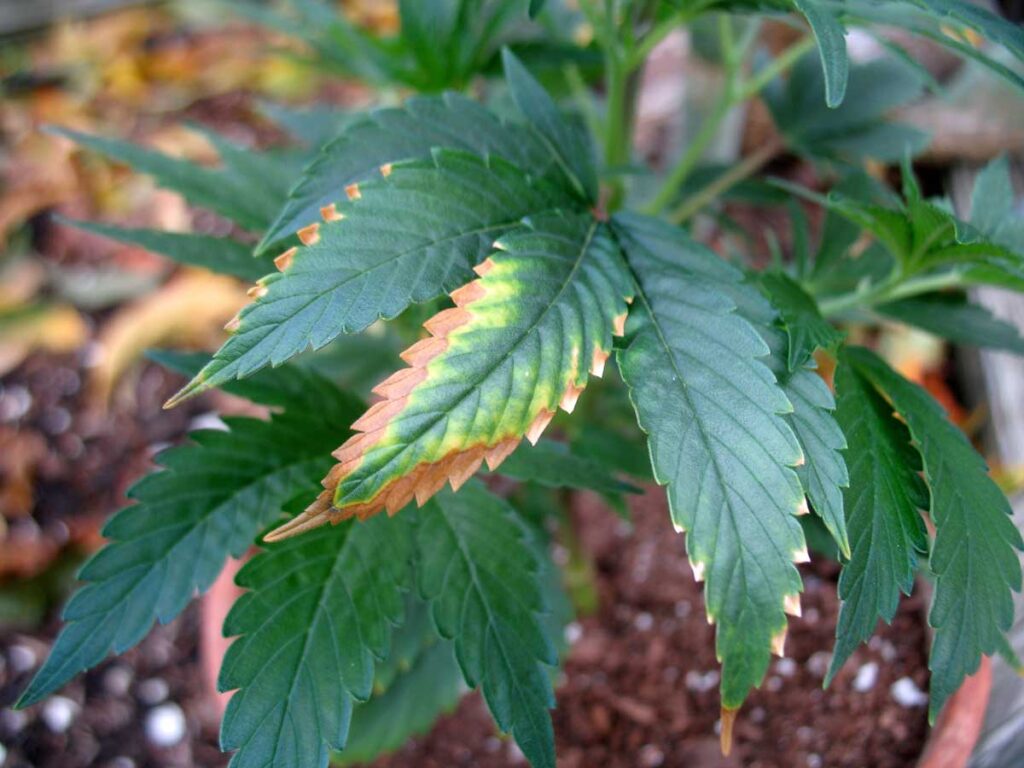
Potassium deficiency is another common reason for why cannabis leaves start to show brown patches. Potassium is vital for various plant functions, including water uptake and photosynthesis. When a cannabis plant doesn’t get enough potassium, you’ll notice brown or yellowing of leaves or spots appearing on the older leaves. In addition, leaf edges turn brown and crispy, and the stems themselves can become weak and scrawny.
How to fix Potassium deficiencies:
To fix a potassium deficiency in your plants, use a high-quality potassium-rich fertilizer. Most nutrient companies will list the ratio of nutrients as N-P-K, the letter K representing Potassium (confusing, isn’t it!). The higher the potassium ratio the better. Ensure your soil or growing medium has adequate drainage, as waterlogged conditions can hinder potassium uptake. Check and adjust your soil’s pH to stay within the range of 6.0-7.0, as this is the optimum range for nutrient uptake, particularly Potassium.
Nitrogen deficiency
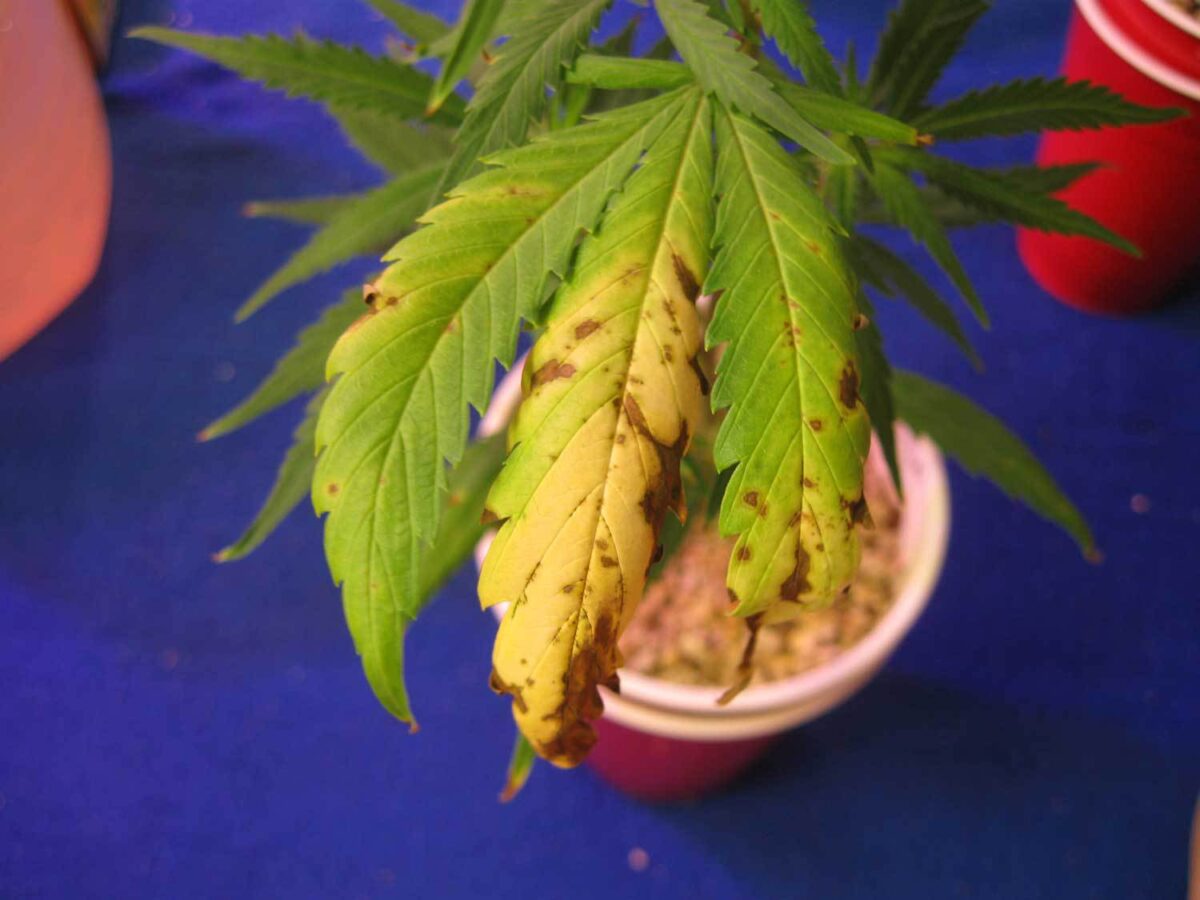
Nitrogen is the most important element in chlorophyll production, the green coloring in leaves that allows photosynthesis, and overall plant growth. When cannabis plants lack nitrogen, older leaves turn yellow, particularly the ones nearer the base of the plant. If the deficiency becomes serious the yellowed leaves will develop brown spots, eventually becoming dry and brittle the falling off the plant. Nitrogen deficiency will also lead to stunted plants and significantly worse yield.
How to fix Nitrogen deficiency:
Resolving a nitrogen deficiency is quite simple. Firstly, check the pH of your soil and make sure it is in the 6.0-7.0 range. Then increase the availability of Nitrogen in your soil by adding a nitrogen rich fertilizer or feed. Regularly check your plants’ pH and maintain a consistent feeding schedule to prevent future nitrogen related problems occurring.
pH too low
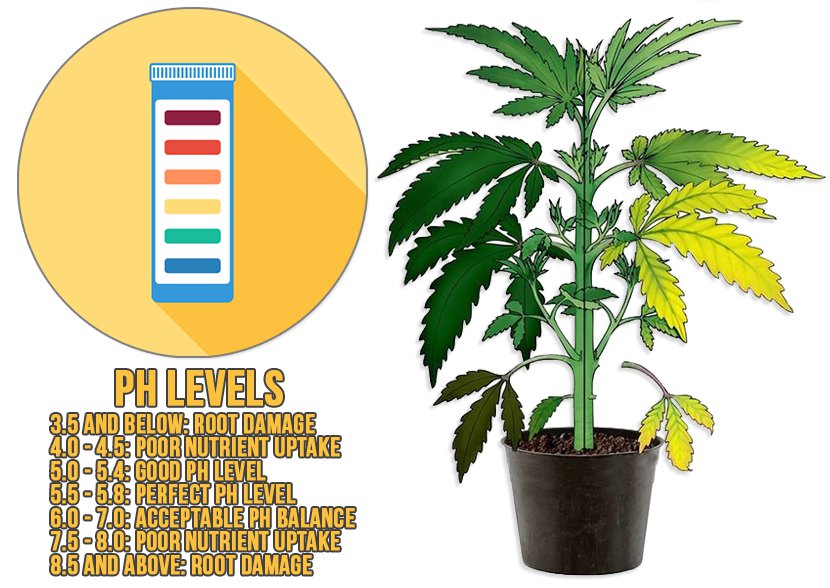
A low pH level (below 6) in your soil or growing medium can cause brown spots on cannabis leaves. When the pH is too low, some nutrient uptake becomes difficult or impossible for the plant. This will lead to poor growth and damage to existing leaves and stems. Symptoms of low pH include brown spots, yellowing leaves, and stunted overall growth.
How to fix your pH level:
If your pH is too low, test your soil or runoff water pH using a reliable pH meter. If the pH is below the optimal range of 6.0-7.0, add a pH up solution or dolomite lime to raise the pH level. Regularly monitoring the pH and adjusting it to stay within this range is critical to ensure your plants can access the nutrients they need. With the pH sorted, maintain a balanced nutrient regimen to support healthy growth.
Light burn
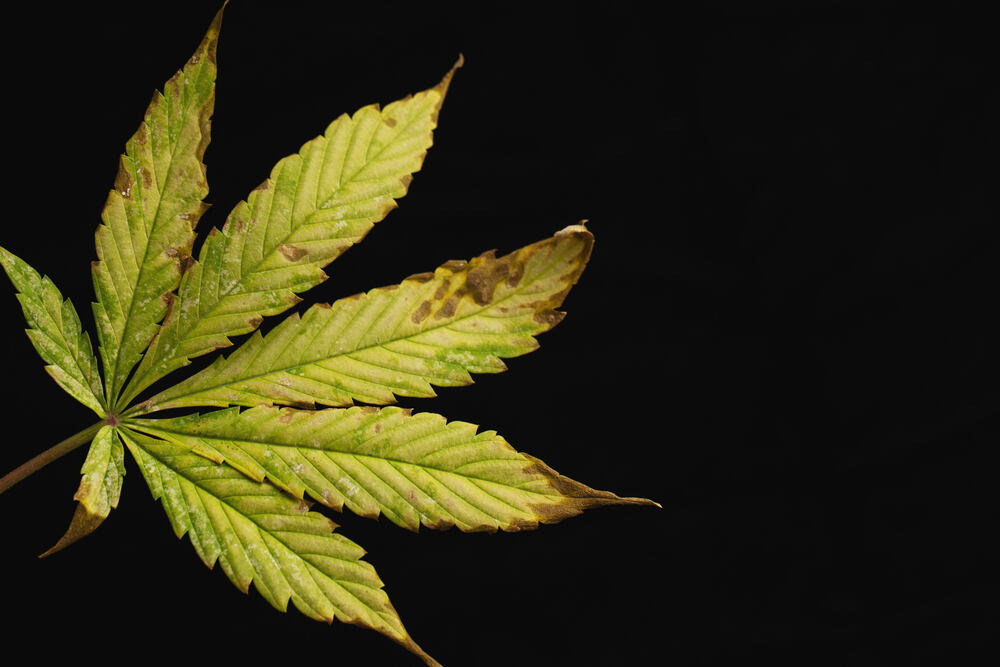
Light burn is a condition where cannabis leaves develop brown spots due to excessive high-intensity light exposure. When plants are too close to powerful grow lights, the intense light can damage the leaves. This can also happen if indoor grow spaces use poorly fitted reflective surfaces, such as aluminium foil or Mylar that is wrinkled. This can focus light and heat energy into spots on the plant, burning them. Light burn is often accompanied by bleached or yellowing leaves at the top of the plant.
How to fix light burn:
To fix light burn related issues, adjust the distance between your grow lights and the cannabis canopy, ensuring the lights are at a safe distance. Make sure you follow the manufacturer's recommendations for light placement, they will know what they are doing! If necessary, use a light meter to measure the intensity and adjust accordingly. Ensure that any reflective surfaces are smooth giving an even reflection of your grow lights. Gradually acclimatize your plants to stronger light levels, and regularly inspect them to prevent future light burn.
Leaf Septoria
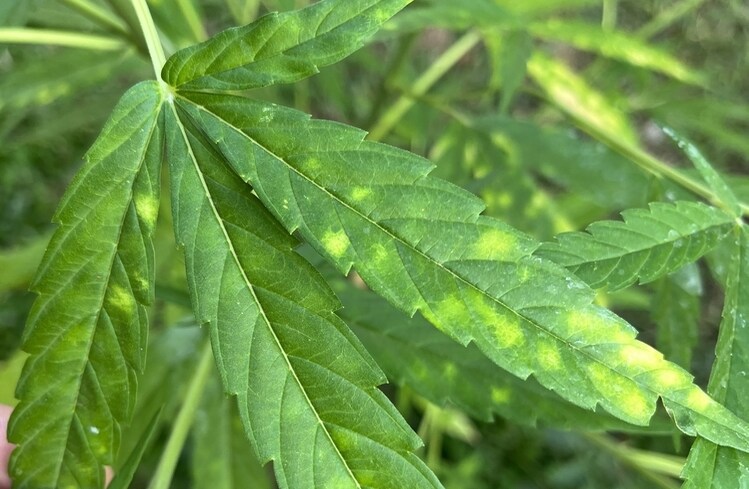
Leaf Septoria is a fungal disease that causes brown or yellow spots on cannabis leaves. This disease thrives in warm, humid conditions and can quickly spread, causing the leaves to drop off. Spotting the signs of Septoria early and dealing with it fully are key to avoiding extensive damage to your crop.
How to fix Leaf Septoria:
To fix Leaf Septoria, remove and dispose of affected leaves immediately to prevent the spread of the fungus. Improve air circulation around your plants by pruning excess foliage and spacing plants adequately. Use a fungicide specifically designed for cannabis to treat the remaining leaves. Maintain a clean growing environment collecting any fallen material or spills, reduce humidity levels, and avoid overhead watering, focusing on the soil surface instead to prevent future outbreaks.
Root issues such as root rot
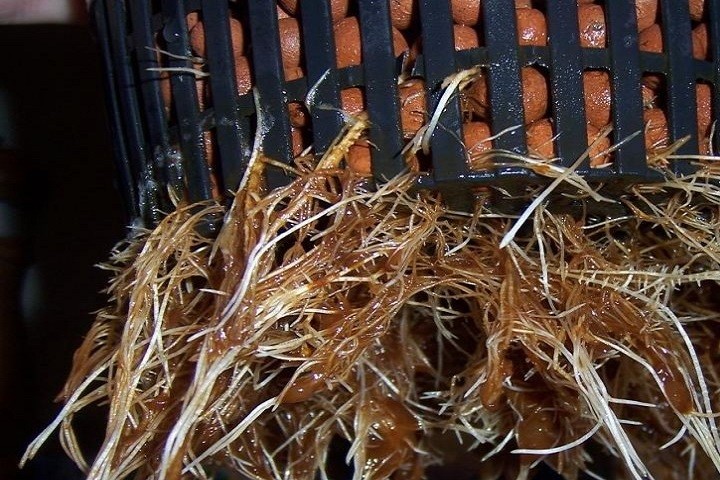
Root issues, particularly root rot, can cause brown spots on cannabis leaves. Root rot occurs when roots are waterlogged and unable to get enough oxygen. This leads to fungal growth and decay in the roots and the leaves. Symptoms include brown spots, yellowing leaves, and an overall wilted appearance.
How to fix root issues:
If you have root rot, first ensure proper drainage in your growing medium and avoid overwatering your plants as this is very common for many growers. Next remove the affected plant from its pot and trim away any diseased roots. Repot the plant in fresh, well-draining soil or medium, and consider adding perlite for drainage and beneficial microbes or a root treatment solution to promote healthy root growth. Adjust your watering schedule to allow the soil to dry out slightly between waterings and prevent future root issues.
Pests including thrips, leaf miners, broad mites, fungus gnats, and plant hoppers
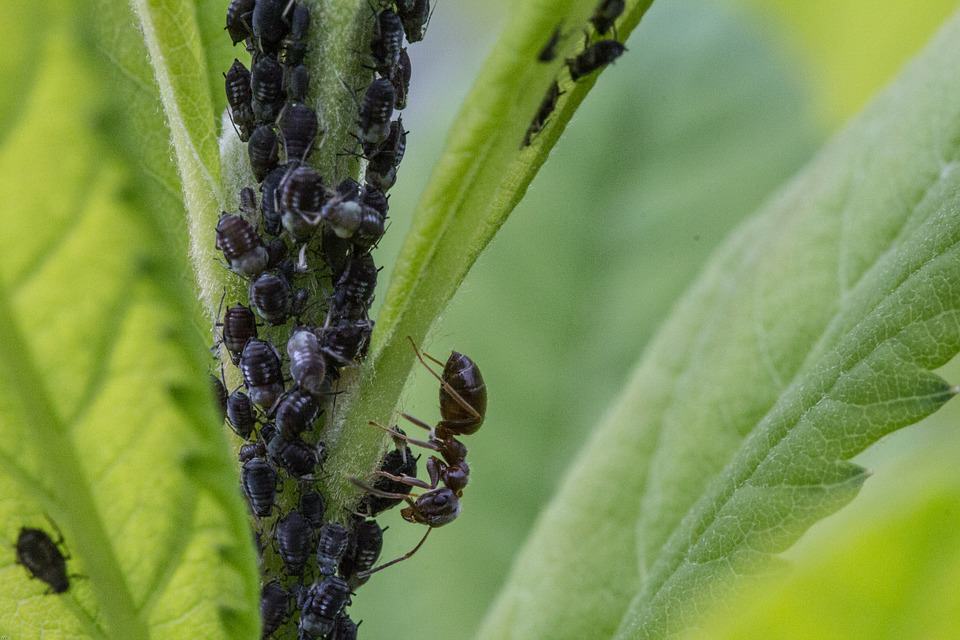
Cannabis pests such as thrips, leaf miners, broad mites, fungus gnats, and plant hoppers can very often cause brown spots on cannabis leaves. These pests damage the plant by feeding on the leaves, sucking sap and even eating the surface layers of the plant, leading to visible spots, discoloration, and overall plant stress.
How to deal with pests:
To control and resolve pest issues, identify the specific pest affecting your plants and use appropriate treatments. For thrips and leaf miners, apply insecticidal soap or neem oil. Broad mites can be controlled with miticides. Use sticky traps and beneficial nematodes to combat fungus gnats. For plant hoppers, remove them manually and use organic insecticides. It is essential to maintain a clean growing environment and introduce beneficial insects like ladybugs to naturally control pest populations.
FAQs
What is the most common cause of brown spots on cannabis leaves?
The most common cause of brown spots on cannabis leaves is nutrient deficiency, particularly calcium and potassium. These deficiencies disrupt the plant's ability to develop properly, leading to visible damage to the leaves. These deficiencies are almost always down to an incorrect pH in your grow medium.
What is the ideal temperature for cannabis?
The ideal temperature for cannabis is between 70-85°F (20-30°C) during the day. Maintaining this range ensures optimal growth and prevents stress on the plants.
What is the ideal humidity for cannabis?
Ideally cannabis grow environments should have a humidity between 40-60%. This range will help prevent mold and make it harder for pests to get a foothold.
What is the ideal pH level for cannabis?
The ideal pH for cannabis is between 6.0-7.0. This range is the best window for maximum uptake from the broadest range of essential macro and micronutrients.
Understanding what is causing brown spots, discolored leaves and damaged is a basic part of any grower’s toolkit. Nutrient deficiencies, pH imbalances, light burn, and pests, are unfortunately common for most growers but they are nothing to panic about. By identifying these issues and applying the provided solutions, you can ensure your cannabis thrives.
